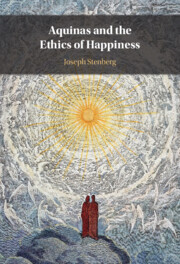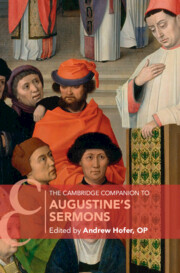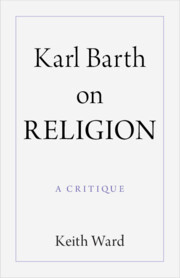Refine search
Actions for selected content:
115 results
2 - Translation
- from Part I - Introduction and Translation
-
- Book:
- The Gospel of Truth
- Published online:
- 23 October 2025
- Print publication:
- 06 November 2025, pp 20-42
-
- Chapter
- Export citation
Mary, the Diaconate, and the Grace of Holy Orders
-
- Journal:
- New Blackfriars ,
- Published online by Cambridge University Press:
- 18 September 2025, pp. 1-15
-
- Article
-
- You have access
- Open access
- HTML
- Export citation
Introduction
-
- Book:
- Aquinas and the Ethics of Happiness
- Published online:
- 07 August 2025
- Print publication:
- 21 August 2025, pp 1-16
-
- Chapter
- Export citation
Chapter 5 - Graced Imperfect Happiness
- from Part I - Aquinas on Individual Happiness
-
- Book:
- Aquinas and the Ethics of Happiness
- Published online:
- 07 August 2025
- Print publication:
- 21 August 2025, pp 123-150
-
- Chapter
- Export citation
Filling the GRACE/-FO gap of mass balance observation in central west Greenland by data-driven modelling
- Part of
-
- Journal:
- Annals of Glaciology / Volume 66 / 2025
- Published online by Cambridge University Press:
- 19 August 2025, e20
-
- Article
-
- You have access
- Open access
- HTML
- Export citation
Chapter 3 - Generosity and Gratitude
- from Part II - Virtues of Direct Caring
-
- Book:
- Attention to Virtues
- Published online:
- 25 July 2025
- Print publication:
- 14 August 2025, pp 39-64
-
- Chapter
- Export citation

Aquinas and the Ethics of Happiness
-
- Published online:
- 07 August 2025
- Print publication:
- 21 August 2025
9 - Pelagius
- from Part II - Case Studies
-
-
- Book:
- The Cambridge Companion to Christian Heresy
- Published online:
- 17 July 2025
- Print publication:
- 31 July 2025, pp 175-194
-
- Chapter
- Export citation
2 - The Goal of Preaching
- from Part I - Augustine’s Pastoral Task of Preaching Sermons
-
-
- Book:
- The Cambridge Companion to Augustine's Sermons
- Published online:
- 26 May 2025
- Print publication:
- 12 June 2025, pp 44-59
-
- Chapter
- Export citation
9 - Sermons on Feasts of the Martyrs
- from Part II - Augustine’s Sermons on the Scriptures and Liturgical Feasts
-
-
- Book:
- The Cambridge Companion to Augustine's Sermons
- Published online:
- 26 May 2025
- Print publication:
- 12 June 2025, pp 169-190
-
- Chapter
- Export citation
13 - God’s Grace and Our Willing in Augustine’s Preaching
- from Part III - Augustine’s Preaching Themes
-
-
- Book:
- The Cambridge Companion to Augustine's Sermons
- Published online:
- 26 May 2025
- Print publication:
- 12 June 2025, pp 245-262
-
- Chapter
- Export citation
5 - Sermons on the New Testament
- from Part II - Augustine’s Sermons on the Scriptures and Liturgical Feasts
-
-
- Book:
- The Cambridge Companion to Augustine's Sermons
- Published online:
- 26 May 2025
- Print publication:
- 12 June 2025, pp 98-115
-
- Chapter
- Export citation

The Cambridge Companion to Augustine's Sermons
-
- Published online:
- 26 May 2025
- Print publication:
- 12 June 2025
Chapter 6 - Visual Culture
- from Part II - Aesthetic and Cultural Contexts
-
-
- Book:
- Gerard Manley Hopkins in Context
- Published online:
- 16 January 2025
- Print publication:
- 16 January 2025, pp 51-59
-
- Chapter
- Export citation
Chapter 16 - Sacramentalism
- from Part III - Religious, Theological, and Philosophical Contexts
-
-
- Book:
- Gerard Manley Hopkins in Context
- Published online:
- 16 January 2025
- Print publication:
- 16 January 2025, pp 138-146
-
- Chapter
- Export citation
Answering Liberal Protestantism: Eric Mascall and Karl Barth
-
- Journal:
- Journal of Anglican Studies / Volume 22 / Issue 2 / November 2024
- Published online by Cambridge University Press:
- 13 January 2025, pp. 499-511
-
- Article
- Export citation
Question 12 - How God Is Known by Us
-
- Book:
- Commentary on Thomas Aquinas's Treatise on the One God
- Published online:
- 23 November 2024
- Print publication:
- 21 November 2024, pp 176-194
-
- Chapter
- Export citation

Karl Barth on Religion
- A Critique
-
- Published online:
- 14 November 2024
- Print publication:
- 21 November 2024
Utrum sit una tantum vera enumeratio virtutum moralium (Whether There Is a Single Correct List of the Virtues of Character)
-
- Journal:
- New Blackfriars / Volume 105 / Issue 5 / September 2024
- Published online by Cambridge University Press:
- 23 September 2024, pp. 471-477
- Print publication:
- September 2024
-
- Article
-
- You have access
- Open access
- HTML
- Export citation
Chapter 5 - Conclusion
-
- Book:
- The Theology of the Books of Nahum, Habakkuk, and Zephaniah
- Published online:
- 28 March 2024
- Print publication:
- 04 April 2024, pp 239-246
-
- Chapter
- Export citation
